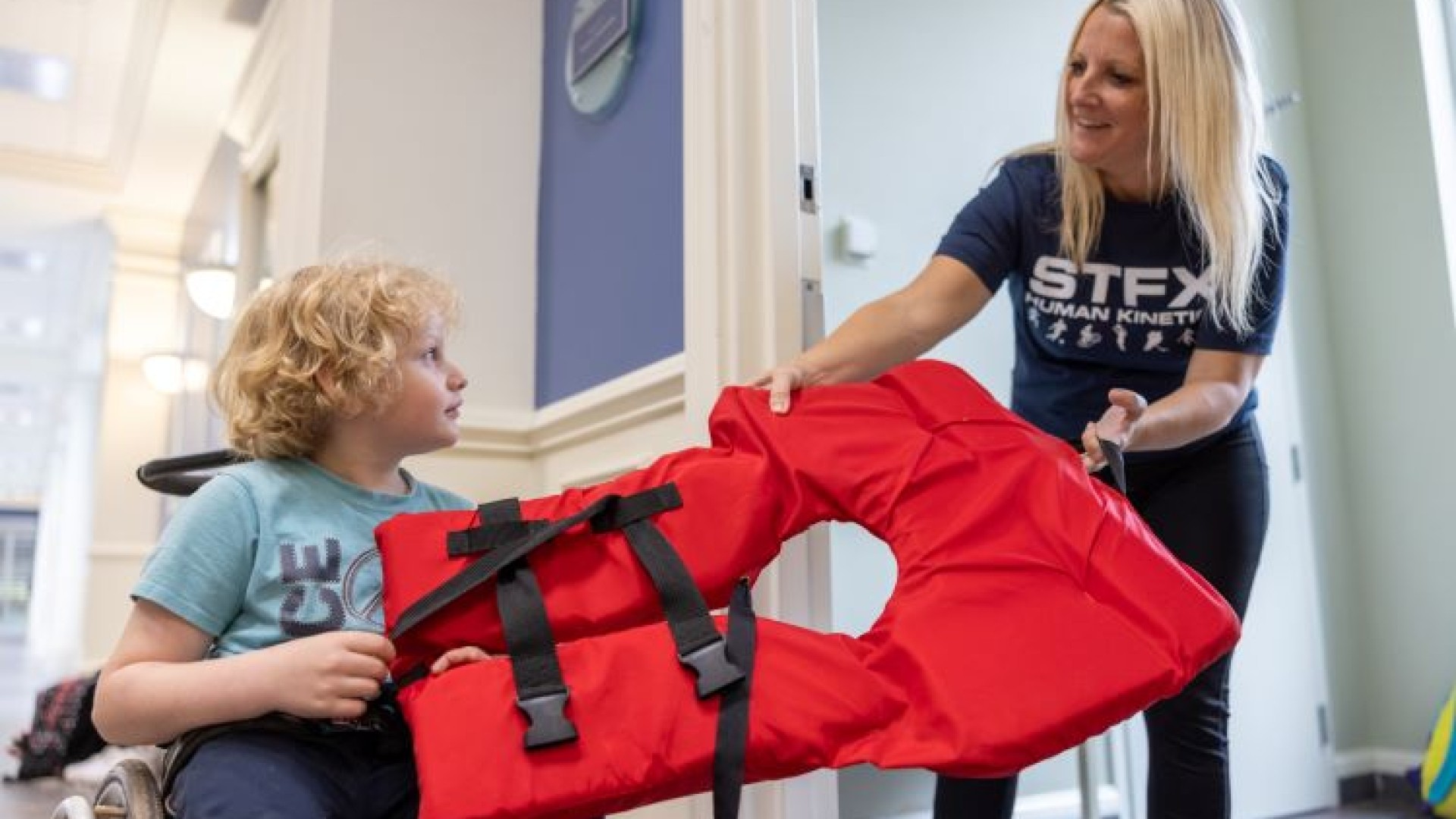
“We’re helping them understand from the perspective of people living in group homes, whose members have a broad range of disabilities…We are trying to get that first person voice from people with lived experience on how they experience the community.” ~ Dr. Amanda Casey
Disability and health—removing barriers that restrict
Meet StFX human kinetics professor Dr. Amanda Casey
Improving the lived experiences of people with disability has been key to StFX human kinetics professor Dr. Amanda Casey’s career, including a recent community-engaged research partnership which explored the perceptions of accessibility amongst adults with various disabilities in the local community. At StFX, Dr. Casey leads the Motor Activities @ X (MAX) Lab, where she collaborates with rehabilitation and planning specialists, local schools, non-profit organizations, and assisted living facilities. Her research focuses on intervention design, vulnerable and rural population health, co-morbidity, accessibility, assistive technology, water safety and autism, inclusive para hockey, and knowledge transfer. She has been on StFX faculty for 15 years.
Addressing barriers, restricting people with disabilities from fully participating in society, is the goal that StFX human kinetics professor Dr. Amanda Casey brings to all her research activities.
So it was particularly gratifying recently to see research result in changes to the built environment in the Town of Antigonish, using the lived experiences and expertise of people in the community living with disability to inform a better understanding of barriers and design solutions, she says.
The project, a collaboration between Dr. Casey and her research student Callie Scott, the PEACH Research Unit at Dalhousie University’s School of Planning and Design, and the Town of Antigonish asked adults living with a broad range of disabilities to share their first-hand knowledge of barriers in the community. Findings from the project have been incorporated into the Draft Accessibility Plan for the Town of Antigonish.
“It is exciting to see the research go into practice,” says Dr. Casey, who notes it is also exciting and important that they now also have video that can teach others. Not only does the research benefit the local community, it has the potential to impact communities throughout the province and beyond.
Dr. Casey says the project, A Tactical Urbanism Approach to Assessing the Value of Accessible Public Spaces, funded through a SSHRC Insight Grant, focused on helping planners understand accessibility from the perspective of people living in local CACL group homes, whose members have a broad range of disability and could provide different perspectives.
“We are trying to get the first person voice from people with lived experience and how they experience the community.”
Dr. Casey said Ms. Scott, who carried out research for the project, used a “Photovoice” method of community-based participatory research, particularly helpful for people who are non-verbal, asking local experts to share their point of view through photo-taking and the sharing of personal stories.
As they explored their environment, participants took photos to express things that are good and things that need to be fixed.
Together with Dalhousie, Dr. Casey and Ms. Scott designed a photo book and knowledge translation videos and worked with town planners, the mayor of Antigonish and the town’s accessibility committee to share and implement the data findings.
Through the project, they learned how environments can impact people and how this impact can be different depending on the disability. She says it was a cool experience to work together with participants to come up with solutions that would make the environment better for all.
Providing Equal Opportunity
Dr. Casey’s interest in health and disability started at a young age.
She grew up with siblings with disabilities and says it was always part of her life. As an athlete, who studied kinesiology at university, she says she could see disparity from a young age.
“I personally witnessed people with disabilities not having the same opportunities as I did. I thought, how do I change that so they have the same opportunities?”
She also wanted to change the perception around people with disabilities.
Today, her research focuses on numerous areas, including working with children with autism, particularly surrounding water safety. Drowning is a leading cause of death for children with autism under age 16. Dr. Casey is working to understand why it happens and looking at ways to prevent it, as well as working on interventions, including teaching children about water safety.
Dr. Casey says her research is very much dependent on what is needed in the community, and looking at how one can change things for the better.
Through her teaching and the MAX lab, she is also teaching students how to do this—to find that need and work to address it. She says it’s very gratifying when she sees her students go on to impact their own communities.
Her honours student, Ms. Scott, for instance, recently presented at the Active Living conference at the National Institute of Health in Washington, DC about at-risk populations in rural Nova Scotia and what can be done to help.
Dr. Casey says success for her also comes when she can see project sustainability, like the changes made to help town residents live a more barrier-free life. Likewise, she was a guiding force behind starting a para hockey program to benefit and provide access to inclusive community-based physical activity for all youth. The fact that the program has now become integrated into minor hockey is a success for her.
“That’s the biggest reward for me.”

